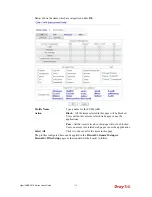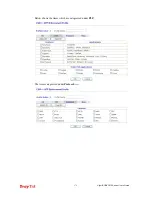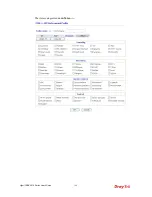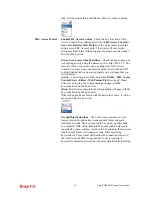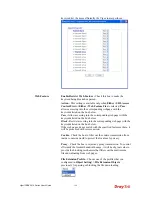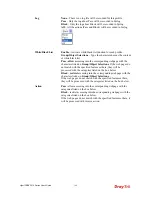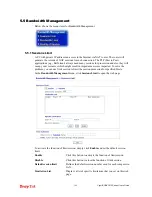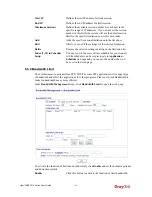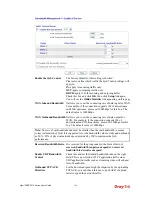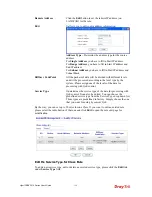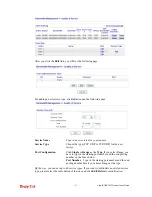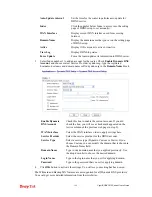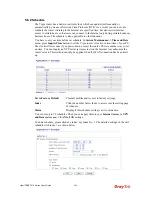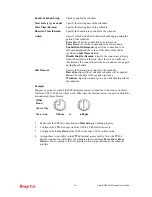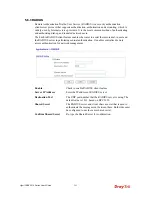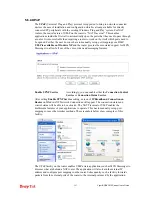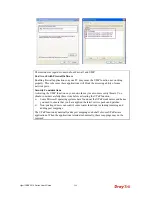
VigorIPPBX 3510 Series User’s Guide
191
Apply to 2
nd
Subnet
–
if bandwidth limit function is enabled,
please check this box to apply to second subnet.
Disable
Click this button to close the function of limit bandwidth.
Default TX limit
Define the default speed of the upstream for each computer in
LAN.
Default RX limit
Define the default speed of the downstream for each computer
in LAN.
Limitation List
Display a list of specific limitations that you set on this web
page.
Start IP
Define the start IP address for limit bandwidth.
End IP
Define the end IP address for limit bandwidth.
TX limit
Define the limitation for the speed of the upstream. If you do
not set the limit in this field, the system will use the default
speed for the specific limitation you set for each index.
RX limit
Define the limitation for the speed of the downstream. If you
do not set the limit in this field, the system will use the default
speed for the specific limitation you set for each index.
Add
Add the specific speed limitation onto the list above.
Edit
Allows you to edit the settings for the selected limitation.
Delete
Remove the selected settings existing on the limitation list.
Index (1-15) in Schedule
Setup
You can type in four sets of time schedule for your request.
All the schedules can be set previously in
Application –
Schedule
web page and you can use the number that you
have set in that web page.
5
5
.
.
5
5
.
.
3
3
Q
Q
u
u
a
a
l
l
i
i
t
t
y
y
o
o
f
f
S
S
e
e
r
r
v
v
i
i
c
c
e
e
Deploying QoS (Quality of Service) management to guarantee that all applications receive
the service levels required and sufficient bandwidth to meet performance expectations is
indeed one important aspect of modern enterprise network.
One reason for QoS is that numerous TCP-based applications tend to continually increase
their transmission rate and consume all available bandwidth, which is called TCP slow start.
If other applications are not protected by QoS, it will detract much from their performance in
the overcrowded network. This is especially essential to those are low tolerant of loss, delay
or jitter (delay variation).
Another reason is due to congestions at network intersections where speeds of
interconnected circuits mismatch or traffic aggregates, packets will queue up and traffic can
be throttled back to a lower speed. If there’s no defined priority to specify which packets
should be discarded (or in another term “dropped”) from an overflowing queue, packets of
sensitive applications mentioned above might be the ones to drop off. How this will affect
application performance?
There are two components within Primary configuration of QoS deployment:
z
Classification: Identifying low-latency or crucial applications and marking them for
high-priority service level enforcement throughout the network.
z
Scheduling: Based on classification of service level to assign packets to queues and
associated service types
Summary of Contents for VigorIPPBX 3510 Series
Page 1: ......
Page 20: ...VigorIPPBX 3510 Series User s Guide 12 This page is left blank...
Page 38: ...VigorIPPBX 3510 Series User s Guide 30 This page is left blank...
Page 88: ...VigorIPPBX 3510 Series User s Guide 80 This page is left blank...
Page 188: ...VigorIPPBX 3510 Series User s Guide 180 The items categorized under Misc...


